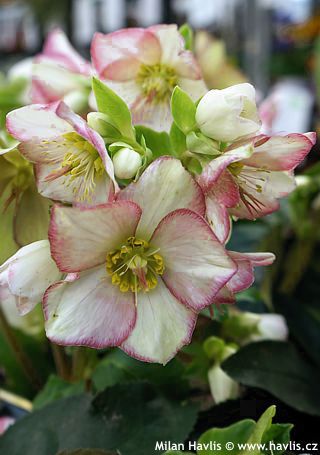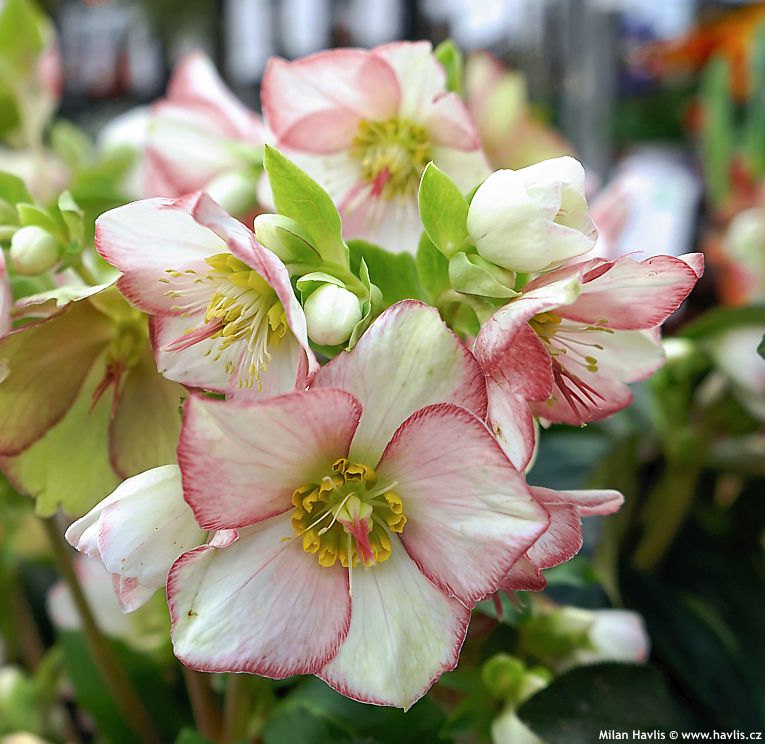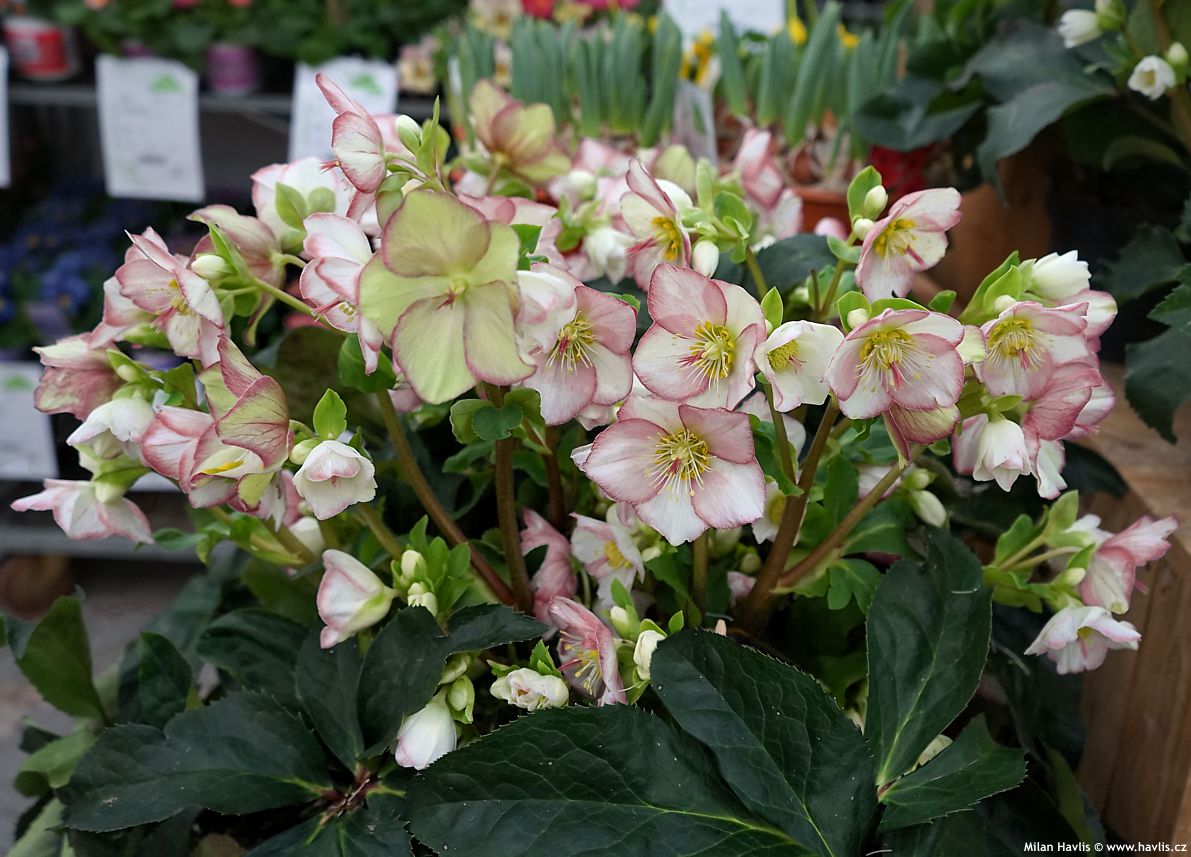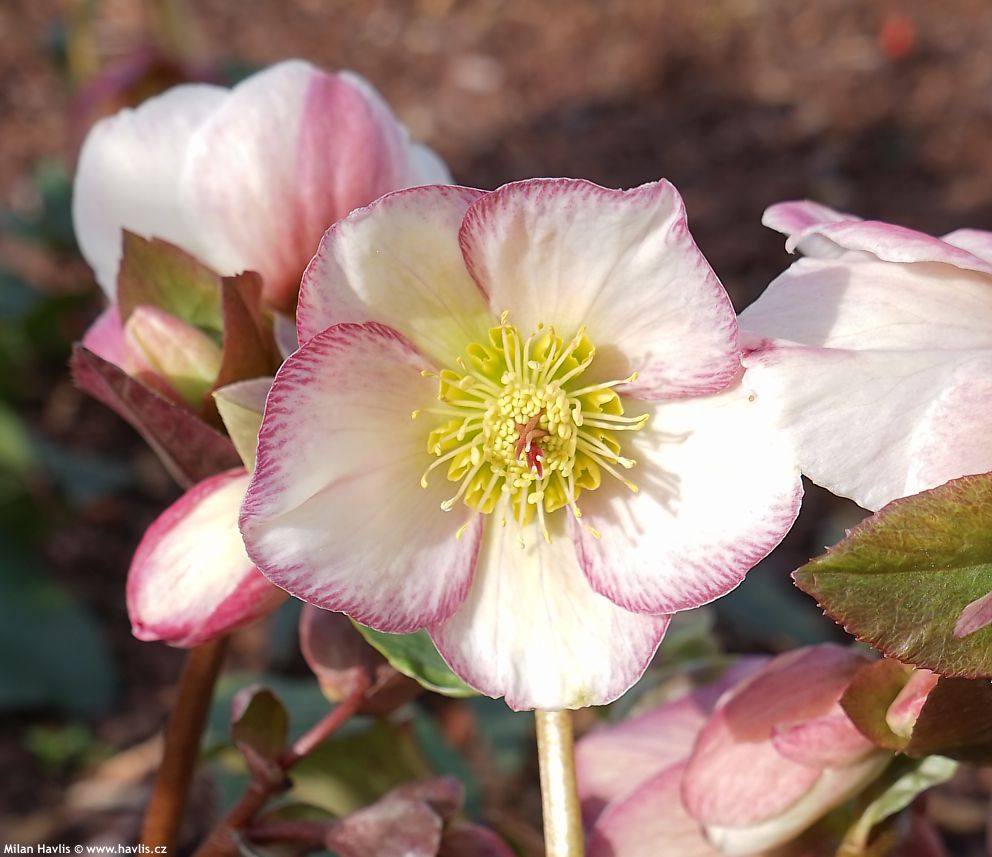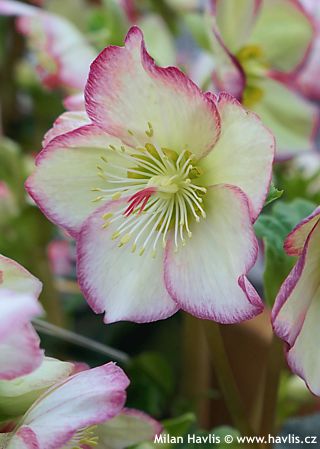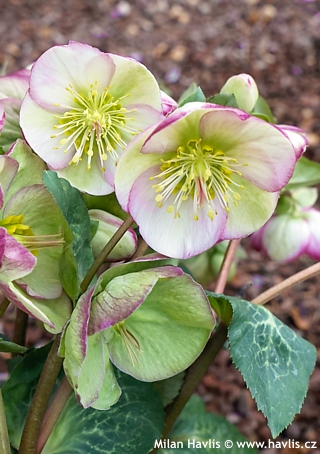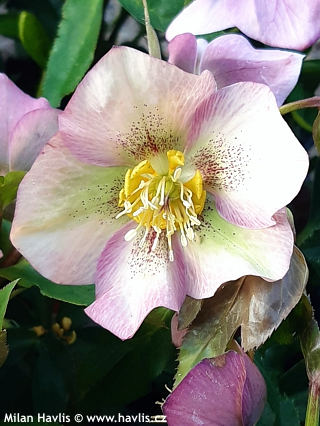Helleborus HGC® ICE N' ROSES® DARK PICOTEE hellebore, Lenten rose


Helleborus
Hellebore (Lenten rose) is not a new plant to Czech and Slovak gardens. I remember those flowering stems that surprisingly pushed through the snow in late winter, and I kept asking grandma how come that a plant can flower while there is still snow on the ground. These evergreen perennials are still very popular, mainly thanks to newly hybridized varieties with fantastic flowers. German nursery Heuger has been breeding Lenten roses since 1950’s. No wonder they are considered the top producers of these beautiful plants in Europe. Their Helleborus Gold Collection® (HGC) is a trademark for the best inventions in the field of hybrid hellebores.
ICE N‘ ROSES® is an attractive series of early hellebores bred by Josef Heuger from Germany. It is a cross of h. x eriscmithii and h. x hybrida, and Josef Heuger named it in honour of his hometown Glandorf: helleborus x glandorfensis. It produces dense tufts with profusion of very large flowers which in warm winters come out in profusion from early December until February. In cold (normal) winters of zones 5-6 blooming starts from late February and lasts almost 3 months but individual varieties may vary.
ICE'N ROSES® DARK PICOTEE is another bicoloured snow rose selection, an improvement over PICOTEE hellebore with 4-6 cm wide, snow-white flowers with darker pink to almost maroon margins and more prominent veins. Chartreuse sepals in the centre are paired with creamy white stamens. Evergreen leaves are leathery, palmate, deep green, and serrated at margins and form a compact clump. Stems are 30-40 cm tall. Flowering begins in December and the plant has flowers until April.
Hellebore likes heavy, evenly moist, neutral to alkaline, rich in humus soil in dappled shade or filtered sun. This hybrid will prefer at least half a day with direct sunlight. Fertilizing will increase flowering and help the leaves remain strong and nice throughout the winter. Grow it somewhere near your house entrance or close to the window you look out of frequently so that you can enjoy the plant when it starts flowering since at that time the weather outside is not yet ideal for walking around the garden. The flowers can cheer up a number of grey and dull days of late winter therefore thumbs up for hellebore! Harmful if eaten. Hardy to about -29 °C (USDA zone 5).
Last update 06-12-2022

































